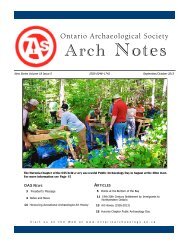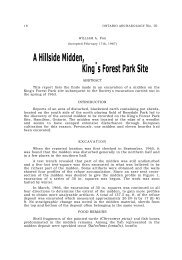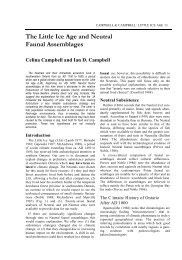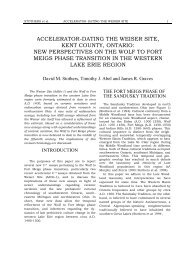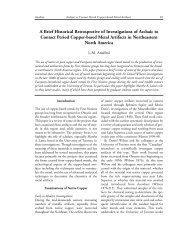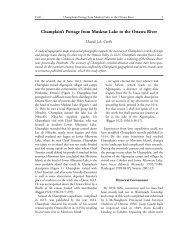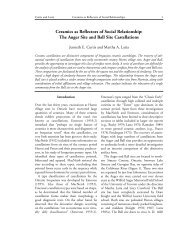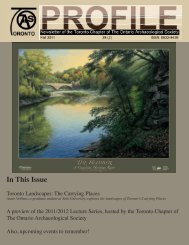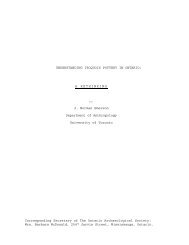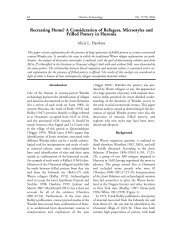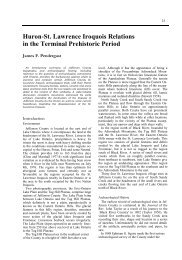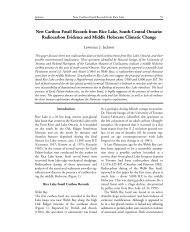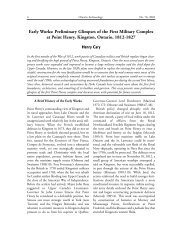oa 74 part 01 pilon layout - Ontario Archaeological Society
oa 74 part 01 pilon layout - Ontario Archaeological Society
oa 74 part 01 pilon layout - Ontario Archaeological Society
- No tags were found...
Create successful ePaper yourself
Turn your PDF publications into a flip-book with our unique Google optimized e-Paper software.
Pilon A Stone Tool Cache from the Hudson Bay Lowlands 11bifacial production of expedient tools. There wasno apparent attempt to produce specificallyshapedtools. The most important considerationwas the creation of a thin, convex, bifaciallyretouched working edge.Pièces Esquillées (Figure 7)The Ouissinaougouk cache includes at least 5 artifactswhich share characteristics of items usuallyreferred to as wedges or pièces esquillées. All fivehave opposing edges which exhibit bifacial edgeretouch or crushing, or both. These edges are relativelyshort and quite straight but they may curvewhen viewed edge-on. The worked edges are parallelto each other, except for one of the specimenswhere they are slightly askew. The actual functionof these items is not known (Mazière 1984). Someauthors distinguish between pièces esquillées andbipolar cores. In the cases presented here, the possibilitythat they are cores seems precluded by thefact that no usable flakes were removed from thecrushed edges with the exception of very shortflakes that only modified the immediate edge characteristics.Three of the five specimens show considerableremnants of cobble cortex. One also has ascraper edge between the parallel pièces esquilléesedges (Figure 7d). It is impossible to determine ifone or the other function preceded the other or ifboth uses occurred simultaneously. However, fortabulation purposes, this specimen is included inthe scraper category.Ultimately the function of these implementsresides in the oral tradition of archaeologists ratherthan in a more objective realm. The proposedfunctions include the grooving and splitting ofbone, antler and perhaps wood, much in the sameway burins are thought to have been used. Thecharacteristic opposing retouched and/or crushededges would appear to be coincidental to use ratherthan the result of production.Gravers/Perforators (Figure 8a-c, Table 3)Four artifacts were identified as gravers or perforators.All are made from flake blanks. In twoFigure 7. Pièces esquillées:GfJi-2:161 (a); GfJi-2:159,160 (b), note these are two conjoinedpieces, exhibiting use andretouch as pièces esquilléesindividually and when originallyjoined; GfJi-2:115 (c);GfJi-2:153 (d), note the lefthand margin of this specimen issteeply retouched as a scrapingedge.



